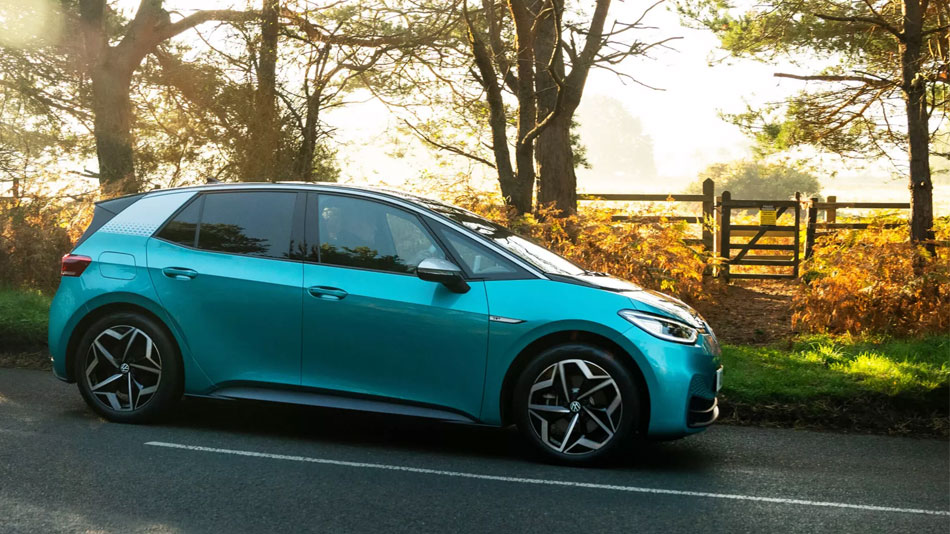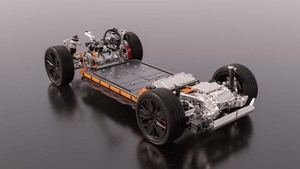In recent years, electric vehicles have become synonymous with the term “range anxiety” – the fear of potentially not being able to reach your destination before running out of battery power. What is an acceptable EV range?
However, almost as soon as this phrase became commonplace, it had already become a myth – if it ever was true in the first place. Afterall, we’ve all experienced the nervousness of the red fuel light coming on while stuck in crawling motorway traffic miles from a petrol station.
The actual reality
A recent survey covering Mobility data across the EU 28 member states reveals that the average trip length by car is 17km. And in the US, known for longer larger geographic coverage, 60% of all vehicle trips are less than 9km and the average individual car journey is just 15.1km, rising to 19.4km for rural areas.
The USA isn’t alone in using personal transport for short distances, the RAC (UK) reports that 76% of all trips are between 3-5km. The average UK car travelling 11,481km per year in 2017, that means that 8,724km are driven over very short distances.
It therefore quickly becomes apparent that our EV range fear of whether long journeys are possible is unfounded. The vast majority of the time our cars are travelling short, stop-start journeys. All while emitting harmful emissions.
The charging network and EV range
One of the supporting factors in “range anxiety” was the availability of EV charging points, and again this situation has changed rapidly. Chargers in the UK have overtaken the number of ‘fuel pumps’. There are now over 40,00 charging points at over 15,000 locations in the UK alone and this number continues to grow as it does in Europe and the US.
Take a look at the availability of charge points near you – Open Charge Map.
Furthermore, with the sheer number of car manufacturers investing in new EV models over the coming years, we can expect to see a dramatic rise in the number of charge points elsewhere.
So what range do we need?
The launch of the VW ID3 is a great example of the evolution of EVs. Looking at the UK Market:
- The Life model offers 217 miles (WLTP) on a single charge and starts at £29,600
- The Tour model offers 336 miles (WLTP) on a single charge and starts from £38,800

The cost per mile and MPGe has to be considered. Take a look at this article where we cover EV versus ICE efficiency.
The landscape has change massively in the last 2 years. There is more choice, more range, lower prices and a growing network of charge points. So much so that the cheaper model with less range is now a viable option.
The median range of an electric car has increased by 56% in the past six years alone, so EVs are already able to drive longer distances between charges. This, coupled with their greater energy efficiency compared to internal combustion engine vehicles means that they will soon offer comparative ranges to ICEs.
In a recent announcement, Elon Musk stated that the Model S Plaid+ (with an estimated extra range of 130 miles) has now been cancelled.

“What we are seeing is that once you have a range above 400 miles, more range doesn’t really matter. There are essentially zero trips above 400 miles where the driver doesn’t need to stop for restroom, food, coffee, etc. anyway.”
– ELON MUSK –
Tesla are citing the fact that the charging network has increased to such a point that, stopping for a quick top up is now as convenient as stopping at a regular fuel station.
We also need to consider ‘Duty of Care’ towards drivers and journey times. Most legislation suggests taking a break after 2 hours of driving time.
Don’t forget why we are the Other points to consider
When thinking about the transition to an EV fleet it is important to remember that EVs convert around 59-62% of the electrical energy they receive into kinetic motion that powers the wheels, which compares very favourably to internal combustion engine (ICE) vehicles, which convert just 17-21% of their fuel into power. As such, when your vehicle does come close to needing an urgent top-up, you should be able to do more with less, reducing that anxiety in the most stressful of driving moments.
Alongside cheaper running costs and faster charging, EVs are expected to achieve a 50% market share by 2030 – displacing 8 million barrels of fuel every day and dramatically reducing air pollution.
Of course, electric cars alone can’t prevent climate change, but alongside better urban planning and public transport, as well as initiatives like flexible working, we can significantly reduce the number short journeys travelled in personal vehicles and help to minimise harmful emissions.
EV range anxiety is arguably already a myth and is no valid reason not to switch to EV.
Range anxiety is generally only a concern for those people that do not drive an electric car.
Bart Vanham
There is a growing list of vehicles that are well within the driving range of most drivers.
EV RANGE AS AT MARCH 2021
| Tesla Model S | 379 |
| Ford Mustang Mach E | 379 |
| Tesla Model 3 | 360 |
| VW ID3 | 340 |
| Tesla Model X | 314 |
| Tesla Model Y | 314 |
| VW ID4 | 310 |
| Nissan Ariya | 310 |
| Cupra Born | 310 |
| Hyundai Kona Electric | 300 |
| Audi e-tron GT | 298 |
| Polestar 2 | 292 |
| Jaguar I-Pace | 292 |
| Hyundai Ioniq 5 | 290 |
| Audi RS e-tron GT | 283 |
| Kia e-Niro | 282 |
| Porsche Taycan Cross Turismo | 280 |
| Porsche Taycan | 280 |
| Kia Soul EV | 280 |
| BMW iX3 | 279 |
| Mercedes EQA | 265 |
| Skoda Enyaq iV | 256 |
| Mercedes EQC | 255 |
| Audi e-tron | 249 |
| Renault Zoe | 245 |
| Audi e-tron Sportback | 241 |
| Nissan Leaf | 239 |
| Peugeot e-208 | 217 |
| Citroen e-C4 | 217 |
| MG5 EV | 214 |
| Mercedes EQV | 213 |
| Vauxhall Corsa-e | 209 |
| Volvo XC40 Recharge | 208 |
| Peugeot e-2008 | 206 |
| Vauxhall Mokka-e | 201 |
| DS 3 Crossback E-Tense | 200 |
| Fiat 500 | 199 |
| Lexus UX 300e | 196 |
| Hyundai Ioniq Electric | 193 |
| e-NV200 Combi | 187 |
| BMW i3 | 175 |
| MG ZS EV | 163 |
| Volkswagen e-Up | 162 |
| Seat Mii Electric | 160 |
| Peugeot e-Traveller | 148 |
| Mini Electric | 145 |
| Vauxhall Vivaro-e Life | 143 |
| Citroen e-Spacetourer | 143 |
| Honda E | 137 |
| Mazda MX-30 | 124 |
| Smart EQ Fortwo | 80 |
| Smart EQ Forfour | 77 |
| Renault Twizy | 62 |



